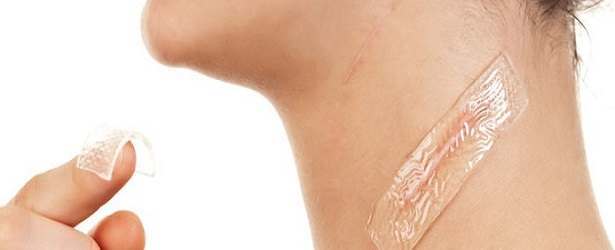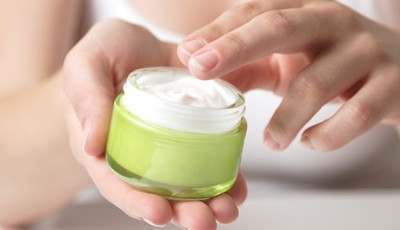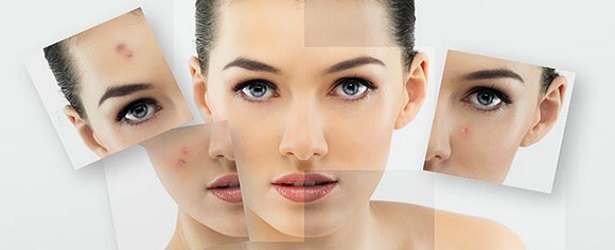Saying Goodbye to Burn Scars
Burn scars are very traumatic and can severely affect self-esteem and quality of life. Moving on from burn injuries can be very stressful, and reducing the appearance of burn scars is the first step in healing. Getting the proper burn scars information helps get you started on the path to feeling better about yourself and also helps you begin a fresh new life with better looking skin.
Burn scars leave marks on the skin that can be hard to deal with, and you may have a hard time going out in public or socializing with friends. Many people who suffer from these marks only avoid others because they don’t want to answer questions about the initial injuries. The good news is burn scars can be treated with several effective treatments. Reducing their appearance can help you say goodbye to burn scars and increase your confidence and quality of life.
Time to Heal Burn Scars
Burn scars can be treated over time, but this depends on how severe the burn was and how long it has been since the original injury. The more time that passes after a burn injury occurs, the harder it is to heal the scar.
If a burn scar is old, it will take a long period of time to heal. Starting treatment as soon as the injury occurs dramatically reduces the time needed to fade the scar. There are many different treatments that can effectively fade and reduce the appearance of burn scars.
Tips for Treating Burn Scars
It is possible to treat burn scars with over-the-counter scar creams and gels, medical treatments and chemical peels. Consult with a specialist as soon as burn injuries are well healed. A dermatologist or cosmetic surgeon can evaluate the depth of the scar and recommend the best treatment.
If the scarring is severe, the doctor may recommend surgery, laser treatments, drugs, medications, or microdermabrasion to help smooth the skin and restore healthy new skin cells.
Costs vary with the type of procedure and the amount of treatments necessary.
If your scarring is minimal to even moderate, you may be sent home with a recommendation for cost-effective, over-the-counter treatments.
All-Natural Remedies
 You can treat mild to moderate burn scars with safe and effective all-natural treatments. When you use natural remedies for burn scars, you can reduce the redness of scar tissue and have healthy looking, smoother skin. These types of treatments have no side effects, and they are relatively inexpensive compared to pricey medical treatments. One popular treatment option is Scarinex. This product has been proven to be very effective in reducing burn scars and many other types of scars.
You can treat mild to moderate burn scars with safe and effective all-natural treatments. When you use natural remedies for burn scars, you can reduce the redness of scar tissue and have healthy looking, smoother skin. These types of treatments have no side effects, and they are relatively inexpensive compared to pricey medical treatments. One popular treatment option is Scarinex. This product has been proven to be very effective in reducing burn scars and many other types of scars.
The most important part of treating burn scars is to begin treatment as soon as possible with a formula that contains healthy nutrients to feed the skin, ingredients to exfoliate and something to increase moisture to the skin and lock it in.
Using the best product yields the best results and helps you recover from burn scars and feel better about yourself.

 Subscribe Now
Subscribe Now

 Laser treatment for scar removal can help diminish large scars. Performed by a physician, it is a type of surgery in which a laser is directed at the scar and any tissue surrounding the scar. Since this is an invasive procedure, doctors usually don’t elect to do this treatment unless all other scar removal methods have failed.
Laser treatment for scar removal can help diminish large scars. Performed by a physician, it is a type of surgery in which a laser is directed at the scar and any tissue surrounding the scar. Since this is an invasive procedure, doctors usually don’t elect to do this treatment unless all other scar removal methods have failed. When getting ready for laser treatment scar removal, there are a few things you must do before going to the doctor. Preparations alleviate side effects and complications from the procedure.
When getting ready for laser treatment scar removal, there are a few things you must do before going to the doctor. Preparations alleviate side effects and complications from the procedure.
 Sometimes it can be hard to tell the difference between keloid and hypertrophic scars. It is important to understand the difference because the treatment for each is very different. Knowing exactly whether a scar is hypertrophic or keloid will help you
Sometimes it can be hard to tell the difference between keloid and hypertrophic scars. It is important to understand the difference because the treatment for each is very different. Knowing exactly whether a scar is hypertrophic or keloid will help you  The reasons behind the tendency to develop keloid scars are not completely known. Several studies show there may be a defect in the immune system response that causes it to overreact to wounds.
The reasons behind the tendency to develop keloid scars are not completely known. Several studies show there may be a defect in the immune system response that causes it to overreact to wounds.

 Cucumber Paste – Take cucumber and grind it into a paste. Spread over acne scars to help reduce redness and inflammation. Cucumber helps moisturize the skin and speed up healing.
Cucumber Paste – Take cucumber and grind it into a paste. Spread over acne scars to help reduce redness and inflammation. Cucumber helps moisturize the skin and speed up healing.



 There are so many creams for scars on the market that it can get a bit confusing picking one. You need to understand the different types of scars in order to find just the right cream for your type of scar. Scar creams can fade and reduce the appearance of scars and leave you with healthier looking skin.
There are so many creams for scars on the market that it can get a bit confusing picking one. You need to understand the different types of scars in order to find just the right cream for your type of scar. Scar creams can fade and reduce the appearance of scars and leave you with healthier looking skin. Types Of Scars
Types Of Scars


 Chemical peels are split into three different categories, superficial peels, medium peels and deep peels. These methods use chemicals to remove the top layer of the affected skin. This promotes the healthy growth of beautiful new skin. For mild cases of acne scars, superficial peels can be used. These peels can be applied anywhere on the body and generally heal very quickly. For more moderate acne scars, medium peels are used. Medium peels can cause slight redness and take over a week to heal.
Chemical peels are split into three different categories, superficial peels, medium peels and deep peels. These methods use chemicals to remove the top layer of the affected skin. This promotes the healthy growth of beautiful new skin. For mild cases of acne scars, superficial peels can be used. These peels can be applied anywhere on the body and generally heal very quickly. For more moderate acne scars, medium peels are used. Medium peels can cause slight redness and take over a week to heal.
 Injections
Injections Chemical Peels – This involves using a type of acid on the skin to take off the first few layers chemically. The skin sloughs off, and new skin is generated to create a smoother appearance. There is a few days’ healing time, and the treatments cause reddened skin initially.
Chemical Peels – This involves using a type of acid on the skin to take off the first few layers chemically. The skin sloughs off, and new skin is generated to create a smoother appearance. There is a few days’ healing time, and the treatments cause reddened skin initially. There are treatments you can buy in drugstores over the counter to use at home. These contain ingredients that help moisturize, heal, and reduce the appearance of scars.
There are treatments you can buy in drugstores over the counter to use at home. These contain ingredients that help moisturize, heal, and reduce the appearance of scars.
 When your body forms a scar, your body is doing its job healing the injury. As soon as the injury or opening happens, your body releases collagen to begin closing up the wound. Collagen is a protein that forms fibers to close up the opening in the skin. In the beginning, the
When your body forms a scar, your body is doing its job healing the injury. As soon as the injury or opening happens, your body releases collagen to begin closing up the wound. Collagen is a protein that forms fibers to close up the opening in the skin. In the beginning, the  Understand that scars are permanent and will never completely disappear. It is possible, however, to fade and smooth the appearance of a scar. The best treatment is the application of an ointment that locks in moisture to the skin and encourages healing and healthy tissue regeneration. Severe scarring can be treated with cosmetic surgery. It is important to begin treatment to scars as soon as possible. Good wound care encourages fast healing with little scarring. It is important to keep the wound clean, dry and moisturized. Never pick at scabs because this breaks up the collagen and can cause an infection in the wound.
Understand that scars are permanent and will never completely disappear. It is possible, however, to fade and smooth the appearance of a scar. The best treatment is the application of an ointment that locks in moisture to the skin and encourages healing and healthy tissue regeneration. Severe scarring can be treated with cosmetic surgery. It is important to begin treatment to scars as soon as possible. Good wound care encourages fast healing with little scarring. It is important to keep the wound clean, dry and moisturized. Never pick at scabs because this breaks up the collagen and can cause an infection in the wound.

 Your body automatically knows to hurry and seal up wounds to prevent infection. Certain types of skin trauma that can cause infection in the body are: surgery, cuts, acne, chemical burns, and certain diseases. There are also other factors that affect scars, including: heredity, skin color, age, and health. Most scars lighten over time and become mostly unnoticeable.
Your body automatically knows to hurry and seal up wounds to prevent infection. Certain types of skin trauma that can cause infection in the body are: surgery, cuts, acne, chemical burns, and certain diseases. There are also other factors that affect scars, including: heredity, skin color, age, and health. Most scars lighten over time and become mostly unnoticeable. Any type of scar will benefit from a moisturizing and nourishing
Any type of scar will benefit from a moisturizing and nourishing